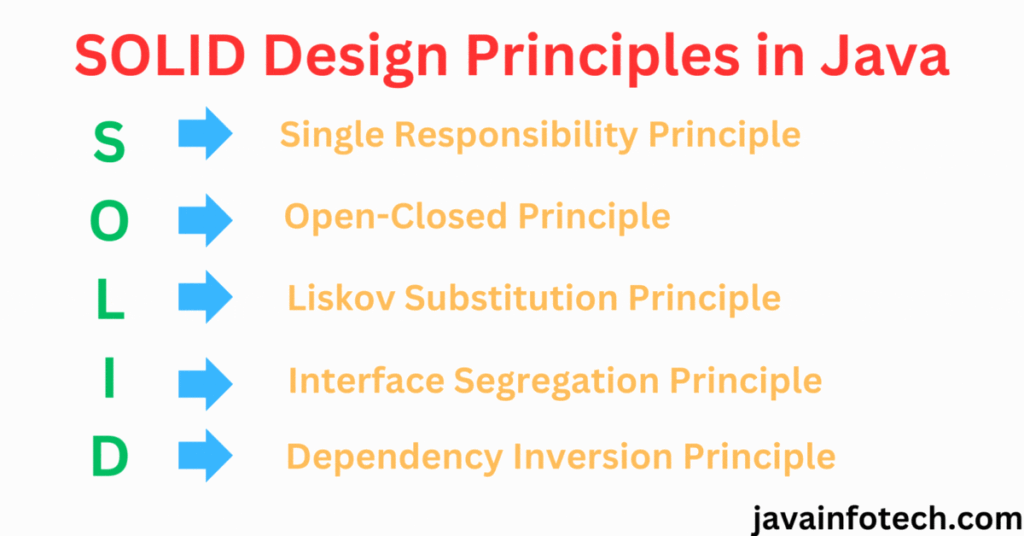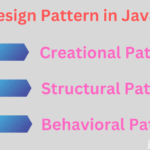The SOLID principles are a set of five design guidelines that help developers write clean, maintainable, and scalable code. They are widely used in object-oriented programming to improve software quality.
Let’s break them down in simple terms:
1. Single Responsibility Principle (SRP)
What It Means: A class should have only one job or responsibility. If a class does too many things, it becomes hard to maintain and understand.
When to Use It:
- When you notice a class is handling multiple tasks (e.g., managing user accounts and processing transactions).
- When you want to make your code easier to test, debug, and maintain.
Example:
Imagine a class that manages user accounts and processes transactions. This violates SRP because it has two responsibilities.
Violation of SRP:
public class AccountAndTransactionManager {
public void createUserAccount() {
// Logic to create a user account
}
public void updateUserAccount() {
// Logic to update a user account
}
public void processTransaction() {
// Logic to process a transaction
}
}Solution (Adhering to SRP):
Split the class into two separate classes, each with a single responsibility.
public class UserAccountManager {
public void createUserAccount() {
// Logic to create a user account
}
public void updateUserAccount() {
// Logic to update a user account
}
}
public class TransactionProcessor {
public void processTransaction() {
// Logic to process a transaction
}
}2. Open-Closed Principle (OCP)
What It Means: A class should be open for extension but closed for modification. This means you should be able to add new features without changing existing code.
When to Use It:
- When you want to add new functionality without breaking or rewriting existing code.
- When you want to make your code more flexible and scalable.
Example:
Imagine a class that calculates the area of shapes. Instead of modifying the class every time you add a new shape, you can extend it.
Shape Class:
public class Shape {
public double calculateArea() {
return 0.0; // Default area for an unspecified shape
}
}Extending the Class:
public class Circle extends Shape {
private double radius;
public Circle(double radius) {
this.radius = radius;
}
@Override
public double calculateArea() {
return Math.PI * radius * radius;
}
}
public class Rectangle extends Shape {
private double length;
private double width;
public Rectangle(double length, double width) {
this.length = length;
this.width = width;
}
@Override
public double calculateArea() {
return length * width;
}
}Usage:
public class AreaCalculator {
public static void main(String[] args) {
Shape circle = new Circle(5.0);
System.out.println("Area of Circle: " + circle.calculateArea());
Shape rectangle = new Rectangle(4.0, 6.0);
System.out.println("Area of Rectangle: " + rectangle.calculateArea());
}
}3. Liskov Substitution Principle (LSP)
What It Means: A subclass should be able to replace its parent class without breaking the system. In other words, if you use a parent class, you should be able to use its subclass without any issues.
When to Use It:
- When you’re using inheritance and want to ensure that subclasses behave correctly.
- When you want to avoid unexpected behavior in your code.
Example:
Imagine a Shape class with a draw() method. A Circle subclass should be able to replace Shape without causing problems.
Shape Class:
public class Shape {
public void draw() {
System.out.println("Drawing a generic shape...");
}
}Circle Subclass:
public class Circle extends Shape {
@Override
public void draw() {
System.out.println("Drawing a circle...");
}
}Usage:
public class DrawingApp {
public static void main(String[] args) {
Shape shape = new Circle();
shape.draw(); // Outputs: Drawing a circle...
}
}4. Interface Segregation Principle (ISP)
What It Means: A client should not be forced to depend on methods it doesn’t use. Interfaces should be small and focused.
When to Use It:
- When you notice an interface has too many methods, and not all clients need all of them.
- When you want to avoid forcing classes to implement unnecessary methods.
Example:
Imagine an interface for shapes that includes methods for both area and perimeter. If a client only needs area, it shouldn’t be forced to implement perimeter.
Violation of ISP:
public interface Shape {
double calculateArea();
double calculatePerimeter();
}Solution (Adhering to ISP):
Split the interface into smaller, more specific interfaces.
public interface AreaCalculatable {
double calculateArea();
}
public interface PerimeterCalculatable {
double calculatePerimeter();
}Implementing Classes:
public class Circle implements AreaCalculatable {
private double radius;
public Circle(double radius) {
this.radius = radius;
}
@Override
public double calculateArea() {
return Math.PI * radius * radius;
}
}5. Dependency Inversion Principle (DIP)
What It Means: High-level modules (e.g., business logic) should not depend on low-level modules (e.g., database access). Both should depend on abstractions (e.g., interfaces).
When to Use It:
- When you want to decouple your code and make it more flexible.
- When you want to make your code easier to test and maintain.
Example:
Imagine a ReportGenerator class that depends on a specific database. Instead, it should depend on an abstraction (interface).
Database Interface:
public interface Database {
void fetchData();
}ReportGenerator Class:
public class ReportGenerator {
private Database database;
public ReportGenerator(Database database) {
this.database = database;
}
public void generateReport() {
database.fetchData();
// Generate report...
}
}Implementing Classes:
public class MySQLDatabase implements Database {
@Override
public void fetchData() {
System.out.println("Fetching data from MySQL...");
}
}
public class MongoDBDatabase implements Database {
@Override
public void fetchData() {
System.out.println("Fetching data from MongoDB...");
}
}Usage:
public class Application {
public static void main(String[] args) {
Database mysql = new MySQLDatabase();
ReportGenerator reportGenerator = new ReportGenerator(mysql);
reportGenerator.generateReport();
}
}Conclusion
The SOLID principles are like a set of rules for writing better code. By following them, you can create software that is:
- Easier to maintain: Changes are less likely to break your code.
- More flexible: You can add new features without rewriting existing code.
- Reusable: You can use the same components in different parts of your application.
Start applying these principles in your projects, and you’ll see a big improvement in your code quality!

